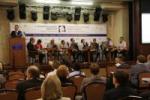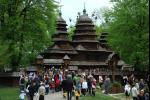- عربي
- Ukraine
- Economy
-
Investment
- Current Investment Trends
- Legal Conditions of Doing Business
- Investment Policy
- Competition
- Setting a Business in Ukraine
- Mergers and Acquisitions
- Taxation
- Import and Export
- Banks and Bank Regulation
- Convertibility and Profits Repatriation
- Currency Regulation
- Protection of Intellectual Property Rights
- Companies
- Travel to Ukraine
- About us
- Useful Sites
- Gallery
- News
Currency rates in UAH
| AED | ||
| BHD | ||
| EGP | ||
| KWD | ||
| LBP | ||
| OMR | ||
| QAR | ||
| SAR | ||
| SYP |
2015-07-06
| Kiev |  |
+32 |
| Donetsk |  |
+28 |
| Dnipropetrovsk |  |
+31 |
| Lviv |  |
+31 |
| Odessa |  |
+27 |
Slavs
In the first millennium BC, Slavs played a leading role in the development of civilization of ethno-Ukrainian society. There were also other ethnic groups which had considerable influence on the ethnogenesis of Ukrainians, such as the, Scithians, Balts, Germans and Kerlates. The
The intensive break-up of patriarchal traditions was observed in the 7th and 8th centuries in the development of East Slav society. Property inequality of the community intensified and determined the formation of the social hierarchy. These processes were especially active in the territory of the Middle Dnipro Area and adjacent lands. Archeological sources have discovered rather quick development of arable farming, cattle rearing, handicrafts, and trade. Soon political and economic centers of Slavic tribes appeared, such as Kyiv. About 14 East Slav tribe unions existed in



